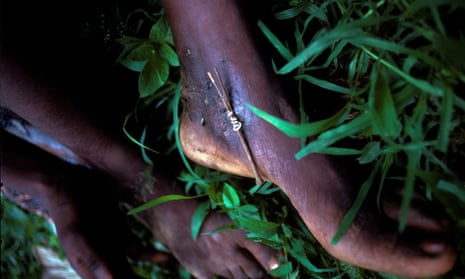The number of cases of a painful and debilitating tropical illness fell last year to a record low, fuelling hopes that it will soon become the second human disease in history to be eradicated.
Only 13 cases of guinea worm disease were reported worldwide in 2022, a provisional figure that if confirmed would be the smallest ever documented, the US-based Carter Center has said.
The tiny number of cases, down from 15 the previous year, is the result of more than four decades of global efforts to stamp out the parasitic disease by mobilising communities and improving drinking water quality in transmission hotspots.
If those efforts ultimately prove successful, guinea worm will not only be the second disease in history to be eradicated, after smallpox, it will be the first to be wiped out without a vaccine or medicine.
“Our partners, especially those in the affected villages, work with us daily to rid the world of this scourge. We are heartened that eradication can be achieved soon,” said Jimmy Carter, the former US president who co-founded the Carter Center in 1982.
When the centre took on leadership of the global eradication programme in 1986, about 3.5 million human cases were recorded annually in 21 countries in Africa and Asia. Pakistan, India and Uganda are among the countries that have eradicated it. Last year the Democratic Republic of the Congo joined the list.
The remaining endemic countries are Chad, where six of last year’s human cases occurred; South Sudan, which recorded five; Ethiopia, which saw one; and Angola, Mali and Sudan, which recorded no cases. The Central African Republic, a non-endemic country, reported one case, which is under investigation.
For guinea worm to be declared eradicated, cases in animals also need to be eliminated and here, too, the numbers are going in the right direction. Infections in animals fell by more than a fifth last year, the Carter Center said.
Once a person is infected with guinea worm, or dracunculiasis, there is no known way to stop the disease taking its course. About a year after the guinea worm larvae have entered the body, usually through drinking contaminated water, the affected person will experience severe pain due to the formation of a blister on their skin and the slow emergence of one or more worms measuring up to a metre. The person can be debilitated for weeks or months.
Adam Weiss, director of the Carter Center’s guinea worm eradication programme, said: “We continue to study ways to defeat and prevent this infection … We won’t stop until the last guinea worm is gone.”
